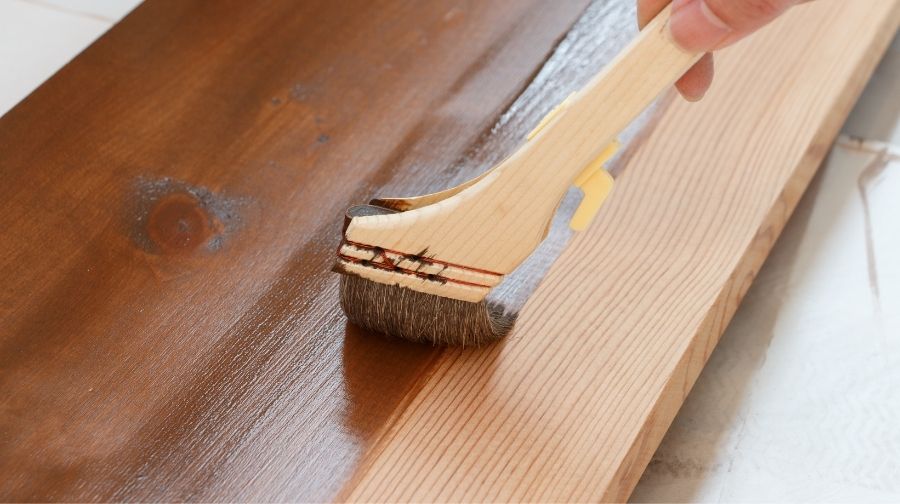
Wood staining, in simple terms, means to bring out a color in your wood. It is done to accentuate the details, the graininess of the wood, or simply to darken it.
Should You Use A Wood Conditioner Before Staining?
Yes you should use a wood conditioner before staining, especially soft lumber because it is more porous. Wood conditioning is a pre-staining procedure that helps ensure that when you stain that piece of wood, it doesn’t get patchy or blotchy.
Wood conditioners are made of varnishes and thinners — there are usually two parts of thinner for every part of varnish. If the varnish is too thick, it can prevent the stain from staying on the wood at all, and this happens when the varnish ends up sealing the wood entirely leaving no porousness to allow the stain to seep even a little bit. The consistency of the conditioner needs to be thin enough to be wiped away with a cloth but also thick enough that a paintbrush can hold it.
What Happens If You Stain The Wood Without Conditioning First?
Conditioning is done to maintain an even color on the wood post staining. Most wood is porous, and they tend to absorb the paints/stains. This makes the color on the wood not spread out evenly. This is especially true for softer, more porous woods. The conditioner’s job is to partially and temporarily seal the wood to ensure that the stain doesn’t seep in through into the wood, leaving the paint on the wood to look uneven and unattractive. Softwoods such as pine are highly porous with many knots in them. If you stain this kind of wood without conditioning — sealing the wood temporarily— the stain will leave some areas darker and some untouched by the stain.
How To Pre-Stain With Wood Conditioner
There are mainly two types of wood conditioners — oil-based and water-based. Choosing between the two depends on whether your staining paint is oil or water-based. However, the purpose of both these types remains the same — to ensure even absorption of the stain without leaving any blotches on the wood.
Prior to applying the conditioner, it needs to be ensured that the wood is clean and the gouges and scratches are all filled with sand. Once you confirm all the scratches are filled, the dust must be vacuumed out, and no particles or glue residue must remain on the wood. Once the wood is cleaned out evenly, the application begins. The wood conditioner must be applied in the direction of the wood grain. It must dry on the wood for 15 mins before the excess is removed with a brush or cloth. The number of applications of the conditioner depends on how porous or soft the wood is. It is recommended to wait for two hours before you start the staining process.
Staining can dramatically and irreversibly alter the appearance of the wood, and so, to ensure a faultless outcome, an important step to complete before you stain your wood is that of conditioning it.
Should I Use Pre-Stain Wood Conditioner?
Subscribe to B&O Craftsman on Youtube



